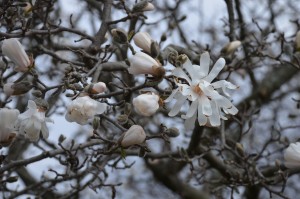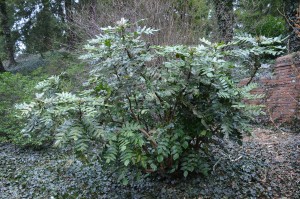Should you plant in the Fall? It depends what region you live in, what month in fall, and what species you’re planting. If you live in the mid-Atlantic, coastal New England, or Southeastern U.S., fall is an excellent time to set most hardy plants. Most (not all) trees, shrubs, perennials, and spring flowering bulbs can be planted fall. Across the northern U.S. and central Canada, winter arrives early. In the southeastern U.S., you may plant safely through Thanksgiving Day.
Why plant in the fall:
- Soils are warm, moderately moist, and easy to dig in.
- Planting weather is mild and it is usually comfortable to work outside.
- Pests, diseases, and weeds are less active in fall and little threat to new plants.
- Deciduous species are dropping their foliage and gives roots time to establish before next summer. Roots actively grow in soil above 40 ºF. Winter temperatures will ensure great blooms next spring.
- Apple and pear trees can be planted, but wait on cherry, plum and peaches. Protect around tree’s tender bark with chicken wire to guard against rabbit and vole injury.
- An ideal time to plant spring flowering bulbs such as daffodils, tulips, hyacinths, and many more.
What NOT to plant in fall:
- Shrubs like roses and bigleaf hydrangeas (H. macrophylla).
- Some perennials such as sage (Salvia spp.), cranesbill (Geranium spp.), and coneflowers (Echinacea spp.).
- In northerly areas (zone 5 and colder), some tree species are sometimes susceptible to an unusually severe winter. Magnolia, dogwood, tulip tree, sweet gum, red maple, birch, hawthorn, flowering cherries and plums, crape myrtles, and several oak and nut tree species like walnut and hickory.
- Marginally hardy species in your region such as broad-leaf evergreens like azaleas (Rhododendron spp.), mountain laurel (Kalmia spp.), camellias, cherry laurel (Prunus laurocerasus), false holly and tea olive (Osmanthus spp.), grape holly (Mahonia spp.), English holly (Ilex aquifolium), Southern magnolia (M. grandiflora).
Prices of plants are deeply discounted in fall and sometimes worth the gamble. Adding 3-4 inches of mulch around newly set trees will trap ground heat to promote root growth and aid plant establishment. Do not fertilize newly planted trees and shrubs in the fall.



 Posted in
Posted in 
